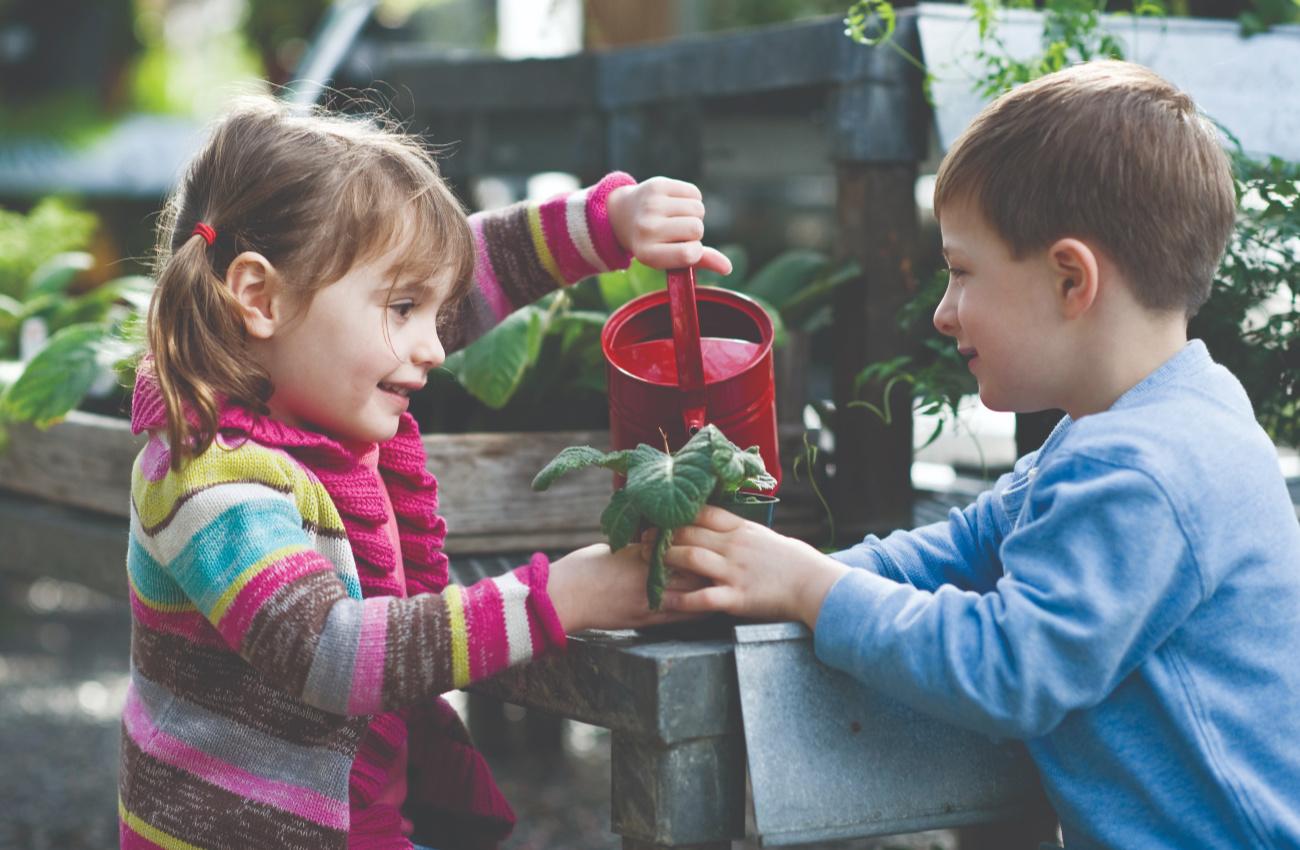Pint Sized Planting
Doesn't matter how much space or experience you have in the garden- anyone can grow their own produce this season!

The kids (and you) have been clamoring for the first day warm enough for outdoor activity. Get some sun and do something positive by using those first hopeful rays to start a family garden. Planting and maintaining a kitchen garden provides the perfect recipe for healthy living: cooperative learning opportunities, access to sustainable whole foods, exercise, and quality family time. Add in some tender loving care, and both your children and garden will grow. Many local garden centers are offering call in orders for curbside pickup, and mail-order is still available as well. Even a pandemic can’t keep us out of the garden!
Getting Started
Meg MacCurtin, Executive Director at the nonprofit Greener Partners, recommends involving your children in gardening activities from the beginning to increase your child’s sense of ownership. Select the garden’s location together, plan a theme (e.g., a pizza garden with tomatoes and basil), and have your child accompany you to the nursery to purchase seeds, topsoil, and tools such as spades, hoes, rakes, and gloves.
MacCurtin suggests that first-time gardeners start simple. “Know your conditions, keep everything manageable, and utilize the right plants for the right space.” A smaller plot with room for expansion may work best for the first season. If you lack space and do not want to till the soil, a container garden is an excellent way to reap the benefits of what you sow – just check the plant’s tag to make sure it will thrive is close quarters. It may also help to choose traditionally fool-proof plants for your first go; radishes deliver results in just 28 days, tomatoes thrive in our area, and herbs like sage and mint are almost impossible to damage.
Helping Hands
Projects can be tailored to each age group based on personal interests and physical ability. Activities such as digging and pouring develop gross motor skills while handling age-appropriate gardening tools addresses fine motor skills. Encourage self-expression by asking your child to draw pictures of the garden that will serve as a blue print. Designate a plot or individual plant for each child to tend. Children can mulch the garden by laying down thick piles of straw and newspaper between the rows, and they can collect vegetable scraps, coffee grounds, and leaves for a compost bin.
Hillary Telegin of Philadelphia, a mother of three children, assigns her two elder children to harvest the seeds from older plants, dig holes, and water the garden while her toddler collects leaves and twigs for composting. Hillary uses the garden as a teaching tool and counsels, “Let the kids be involved in the maintenance of the garden and marvel at the fruits of their labor. They will be very proud of themselves!”
Use Your Tools
Try your hands at raised beds! Our children have more time on their hands than ever for a DIY project so let them loose to design and create with tools and materials. Some adult supervision may be necessary, depending on their ages and experience, but letting them build in addition to planting and harvesting will really give them a feeling of satisfaction for completing a project from beginning to end!
Throughout the year, nurturing your garden will produce life lessons for the entire family. In addition to botany and cooking, caregivers can demonstrate charitable giving via the family garden. Encourage your children to plant additional vegetables for donation to a local food bank. Adults can mentor older children, who in turn can assist younger children with gardening tasks. Use these opportunities to teach valuable leadership skills and the importance of cooperation and empathy.
Article by Jennifer Morgan, originally published in our Spring 2012 Issue. Photograph by Silvina B. Photography. 2020 updates and contributions by Pamela Badolato.



NO COMMENTS